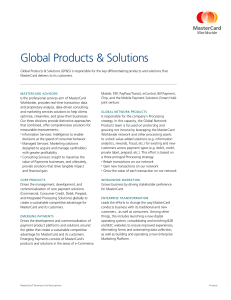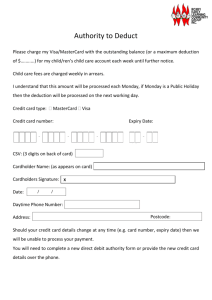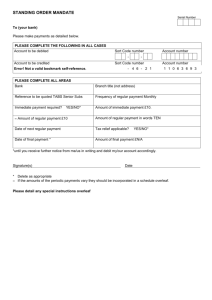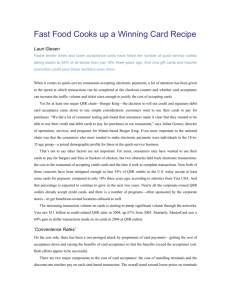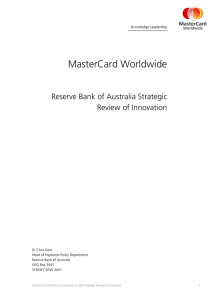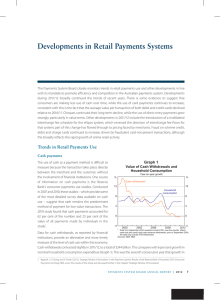History of Card Payments
advertisement
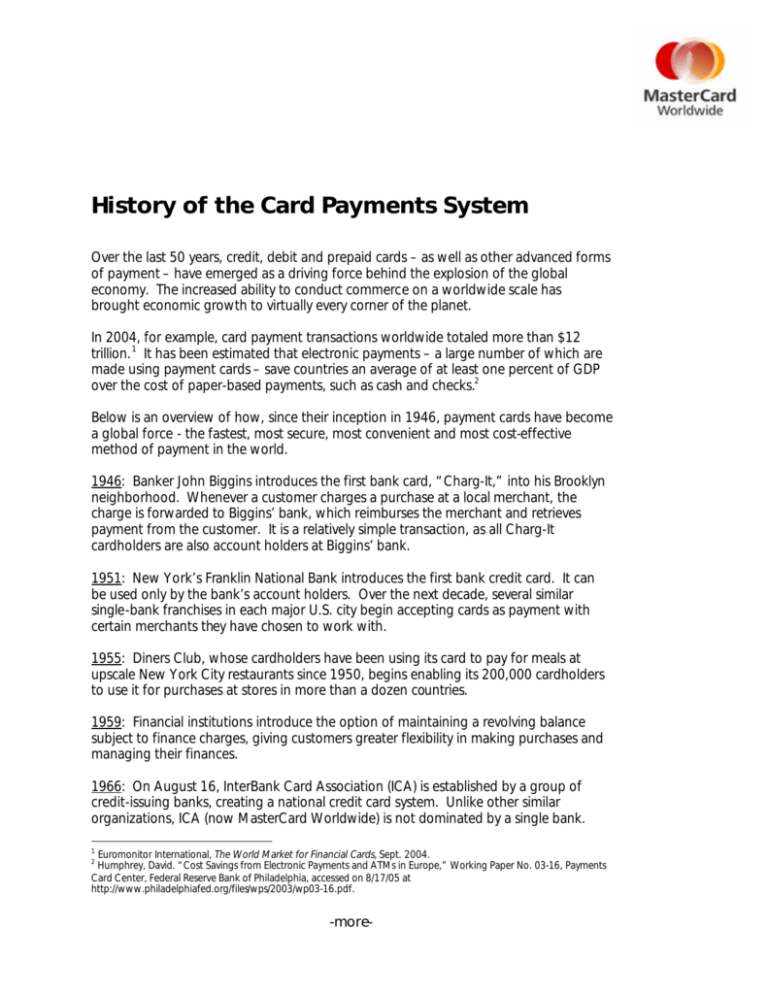
History of the Card Payments System Over the last 50 years, credit, debit and prepaid cards – as well as other advanced forms of payment – have emerged as a driving force behind the explosion of the global economy. The increased ability to conduct commerce on a worldwide scale has brought economic growth to virtually every corner of the planet. In 2004, for example, card payment transactions worldwide totaled more than $12 trillion. 1 It has been estimated that electronic payments – a large number of which are made using payment cards – save countries an average of at least one percent of GDP over the cost of paper-based payments, such as cash and checks.2 Below is an overview of how, since their inception in 1946, payment cards have become a global force - the fastest, most secure, most convenient and most cost-effective method of payment in the world. 1946: Banker John Biggins introduces the first bank card, “Charg-It,” into his Brooklyn neighborhood. Whenever a customer charges a purchase at a local merchant, the charge is forwarded to Biggins’ bank, which reimburses the merchant and retrieves payment from the customer. It is a relatively simple transaction, as all Charg-It cardholders are also account holders at Biggins’ bank. 1951: New York’s Franklin National Bank introduces the first bank credit card. It can be used only by the bank’s account holders. Over the next decade, several similar single-bank franchises in each major U.S. city begin accepting cards as payment with certain merchants they have chosen to work with. 1955: Diners Club, whose cardholders have been using its card to pay for meals at upscale New York City restaurants since 1950, begins enabling its 200,000 cardholders to use it for purchases at stores in more than a dozen countries. 1959: Financial institutions introduce the option of maintaining a revolving balance subject to finance charges, giving customers greater flexibility in making purchases and managing their finances. 1966: On August 16, InterBank Card Association (ICA) is established by a group of credit-issuing banks, creating a national credit card system. Unlike other similar organizations, ICA (now MasterCard Worldwide) is not dominated by a single bank. 1 Euromonitor International, The World Market for Financial Cards, Sept. 2004. Humphrey, David. “Cost Savings from Electronic Payments and ATMs in Europe,” Working Paper No. 03-16, Payments Card Center, Federal Reserve Bank of Philadelphia, accessed on 8/17/05 at http://www.philadelphiafed.org/files/wps/2003/wp03-16.pdf. 2 -more- MasterCard Worldwide – Page 2 History of the Card Payments System Member committees are created to run the association. They establish rules for authorization, clearing and settlement; standardize the billing process; put in place rules and procedures to reduce fraud and other abuses; and handle marketing, security and legal aspects of running the organization. The ICA also develops a payment network system to process the exchange of funds. 1968: ICA begins what is now a huge global network by forming an association with Banco Nacional in Mexico. Later that year, they form an alliance in Europe with Eurocard and the first Japanese members join. Many countries follow close behind the early international members and by the late 1970s, ICA has members from as far as Africa and Australia. To reflect the commitment to international growth, ICA changes its name to MasterCard. 1980s: MasterCard leads the charge to globalize the use of payment cards by expanding them into Asia/Pacific and Latin America. During this period, the first purchase using an “ATM” card and a personal identification number (PIN) at a point-ofsale terminal is processed. 1983: Prepaid telephone cards are introduced by STMicroelectronics. 1987-1988: MasterCard continues its work to expand payment cards globally by introducing the first payment cards in the People’s Republic of China and the Soviet Union. 1988: The first nationwide PIN-debit provider is launched, and the first signature debit transaction is processed. 1989: MasterCard begins laying the groundwork for the first truly global debit system by expending the technology into Europe. 1996: Video-store chain Blockbuster introduces the first nontelephonic prepaid gift card, in lieu of gift certificates. 1997: Businesses that employ large numbers of unbanked workers begin offering payroll cards as an alternative to paper checks; these cards can be used wherever credit or debit cards are accepted. 1990: MasterCard is the first to bring debit cards to Canada. As of 2005, the nation has the highest per-capita use of debit cards in the world.

